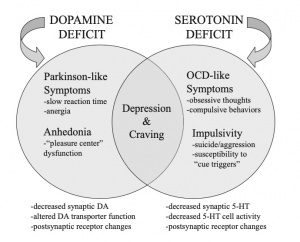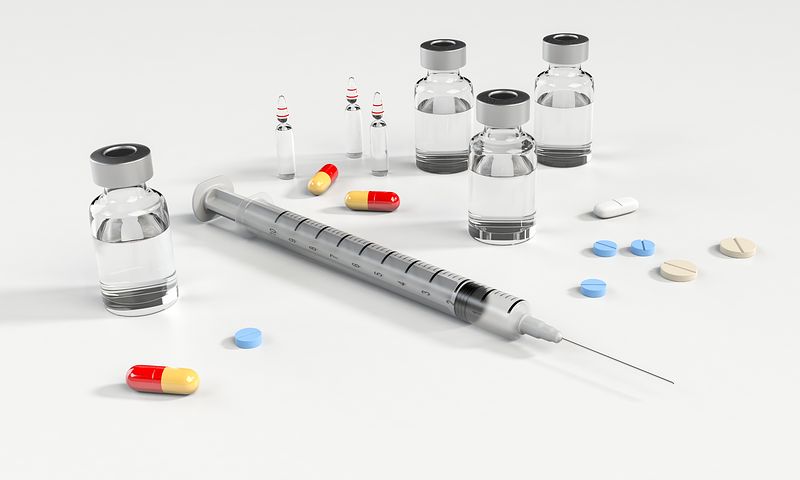The Power of a Pill
Treating individuals with addiction is not as easy as telling someone to simply “stop taking a drug.” There are many reasons this claim is problematic, but some of which include the fact that drugs, especially drugs of abuse, change the neurochemistry of one’s brain, making the desire and craving for a drug not simply the result of lack of willpower. In fact, the behaviors an individual feels from withdrawal from a drug are directly the result of this change in brain chemistry. The behaviors are biological. Drugs have the power to change the wiring/ circuitry of the brain, and they also alter synaptic plasticity. This can make one wonder, is this change permanent? Can it be undone? Are there treatment options to overcome addiction?
Dual Deficit Model
Specifically, drugs such as cocaine and methamphetamines produce a “rush” or “high” that is scientifically mediated by an increase in extracellular DA levels in mesolimbic brain areas.
We know that chronic use of these abused stimulants will cause a shift in neurochemistry, including changes in circuitry and synaptic plasticity. Research has shown that withdrawal from chronic cocaine and alcohol abuse is likely the result of the lack of DA and 5-HT function. The negative withdrawal states experienced by many users is likely the result of long-term changes in both the structure and function of the brain. Researchers propose a dual deficit model of stimulant addiction in which drug-induced DA and 5-HT dysfunction results in withdrawal symptoms, drug craving, and relapse.

Figure One shows the dual deficit model and how decreased synaptic DA in stimulant withdrawal causes “Parkinson-like symptoms” whereas decreased 5-HT creates depressed moods, OCD-like symptoms, and lack of impulse control.
Hope with PAL-287
The goal is that individuals with deficits in DA and 5-HT functioning may be able to utilize medication that corrects the abnormalities in this functioning. Researchers hoped to identify and characterize a nonamphetamine transporter substrate that would release DA and 5-HT, without affecting NE, however, this was unsuccessful as it was impossible to remove NE and DA releasing properties. However, researchers found a lead on PAL-287, a nonamphetamine monoamine releaser which has mixed DA/5-HT releasing qualities. This is hopeful, as other drugs typically use either DA or 5-HT properties, not a combination of the two. Administration of PAL-287 to rats increased the extracellular DA and 5-HT, with large impacts on 5-HT compared to DA.
The results with PAL-287 show that nonamphetamine substrate at DAT and SERT will release DA and 5-HT from neurons. It will also be minimally reinforcing, and also suppress the ongoing cocaine self-administration. In addition, repeated high-dose administration to rats of PAL-87 fails to affect brain tissue 5-HT levels, unlike others (MDMA) which cause significant 5-HT deficiencies. Moreover, PAL-287 does not support self-administration behavior, which is key finding. And most importantly, chronic administration of the drug diminishes cocaine self-administration in monkeys, providing a promising outlook for it’s impact on humans.
Overall, PAL-287 has many desirable qualities, including:
- minimal locomotor activation
- lack of long-term 5-HT neurotoxicity
- weak reinforcing effects

Abstract by T. Zetocha
While there is still more research to be done, these findings make the treatment for addiction hopeful.
https://psycnet.apa.org/fulltext/2008-17521-003.pdf?auth_token=c33ed3a8e66ca61048165ad594a6e75060e9ed5c
